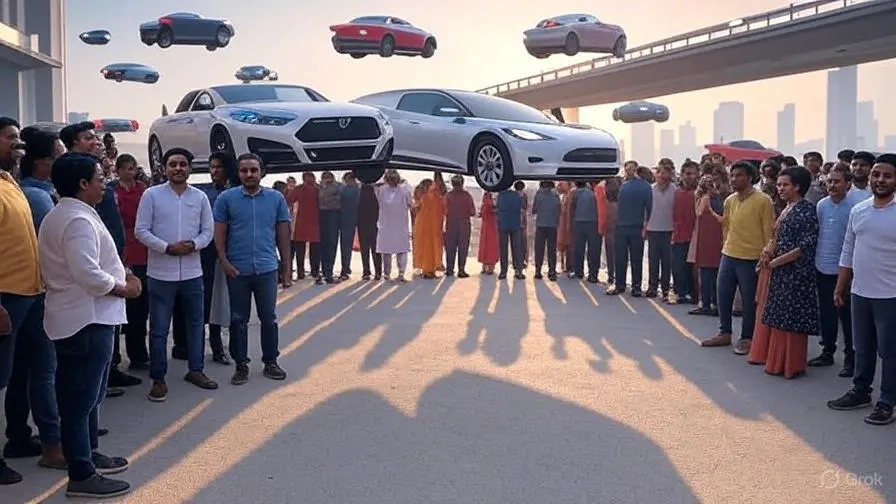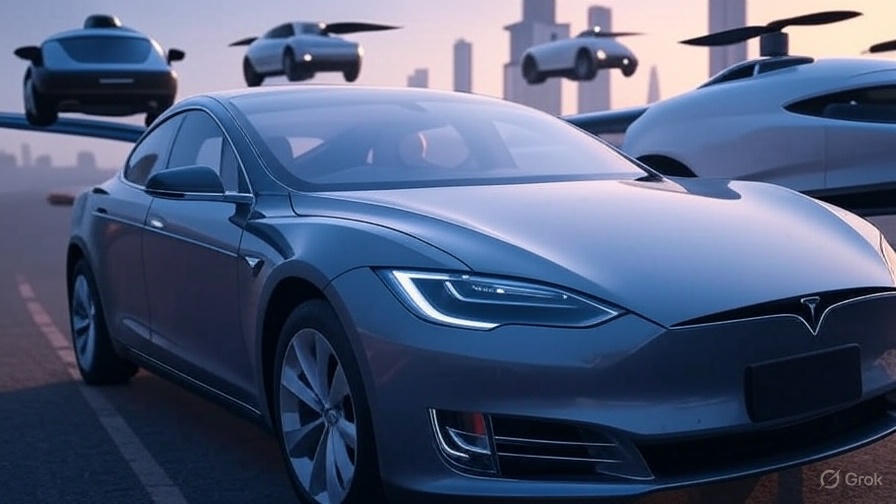Flying cars are no longer science fiction. As India welcomes its first fleet of flying vehicles, discover how urban life, travel, and the very idea of commuting are changing forever.
It’s the year 2032. The skies above Bengaluru are buzzing—not with airplanes, but with sleek, silent machines zipping through air lanes. A mother waves at her daughter as she boards a compact flying car to school. No traffic jams, no horns, no dust. Just smooth, sky-bound travel.
Yes, it’s real. Flying cars have arrived in India.
From Sci-Fi to Reality: India’s First Flying Car Fleet
After years of prototypes, policies, and public anticipation, India’s first commercial flying cars are finally operational. Thanks to partnerships between Indian startups and global aerospace companies, vertical take-off and landing (VTOL) vehicles are now transporting people across cityscapes.
In cities like Delhi, Mumbai, Hyderabad, and Bengaluru, skyports are being built on mall rooftops and office towers—places where people can board or land a flying taxi just like an elevator.
The Public Reaction: Amazement and Adaptation

On Day 1, as the first flying car landed on a floating pad near Marine Drive, a crowd gathered to record it. 65-year-old Meena Sharma gasped,
“I only saw this in movies. I never imagined I’d see one in real life—in India!”
Younger citizens, especially Gen Z and Alpha, took to social media instantly:
“Ola Uber who? SkyTaxi is here.”
“Delhi traffic: canceled.”
How Flying Cars Are Changing Daily Life

1. No More Traffic Jams
In cities where 2-hour commutes were normal, flying cars have cut travel time down to 15 minutes. Skipping roads entirely has redefined urban mobility.
2. Emergency Response Revolution
Ambulances now fly. Heart patients and accident victims are reaching hospitals faster than ever before—sometimes saving lives that road transport couldn’t.
3. Clean and Electric
Most flying cars in India run on electric propulsion, making them eco-friendly and noise-controlled—important for crowded cities.
4. Job Creation and New Skills
Skyport operators, aerial traffic controllers, air-route planners—new careers are being born as this industry lifts off.
Challenges That Remain
Flying cars are still expensive and limited to urban hubs. Air traffic regulations, safety, and weather response systems are evolving. The government is rolling out the National Urban Air Mobility Policy to manage this change responsibly.
The Bigger Picture: India Leading the Skyway
Countries like the UAE, Japan, and the USA may have led the way, but India is now catching up fast. With its tech talent and need for smarter infrastructure, flying cars in India are not just a luxury—they’re a necessity for megacity survival.
Startups like SkyLeap India, VayuTech, and IndiHover are now household names in 2032.
Check out Best Electric Scooter
Final Thoughts
Flying cars were once fantasy. Today, they’re landing on rooftops near you.
What used to be hours stuck in honking traffic is now peaceful sky rides over the city. What was once fiction, is now innovation. And India—once stuck in potholes and pollution—is rising above it all, quite literally.








